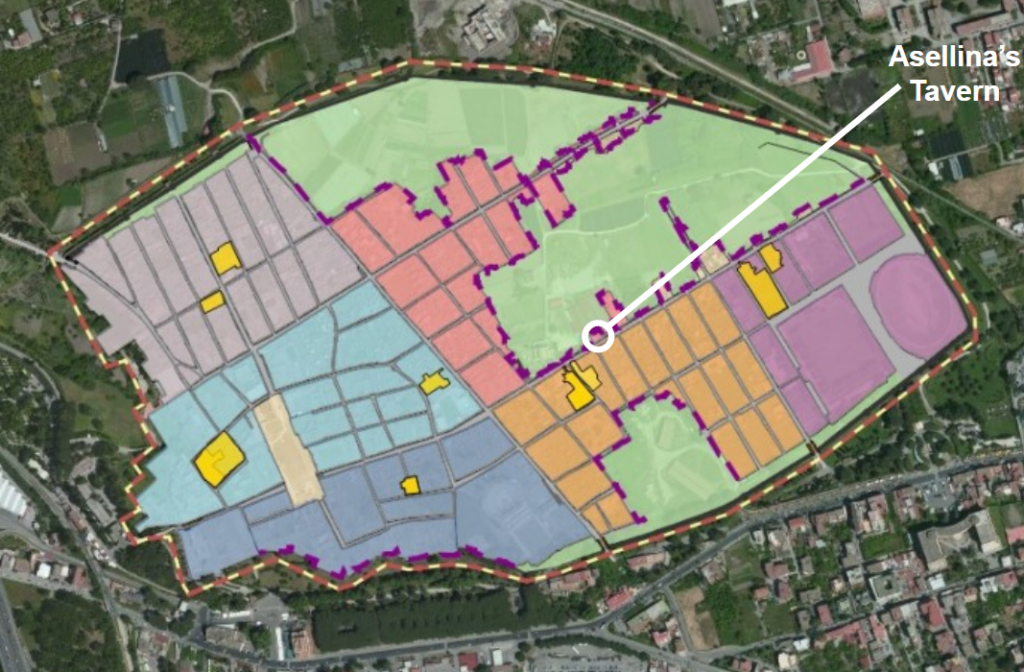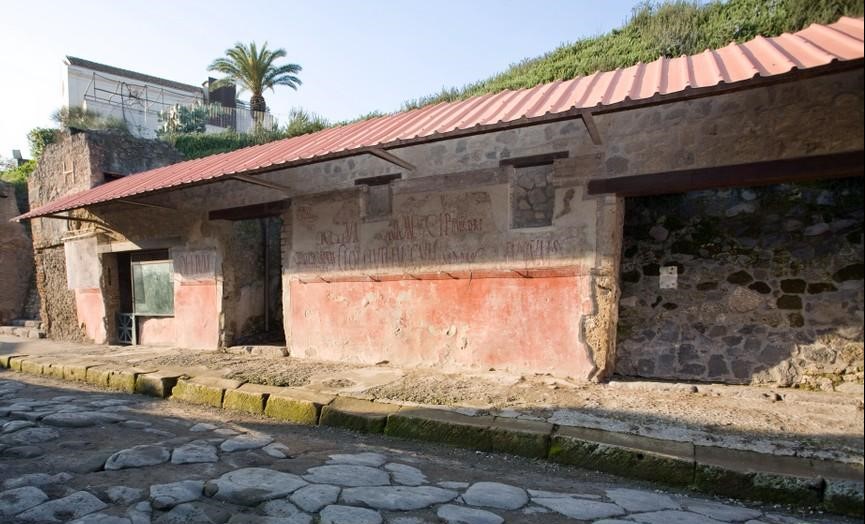A volcanic eruption in 79 AD preserved the Roman city Pompeii as it existed at the moment of the eruption. In class we discussed how Pompeii is not a time capsule. Following Pompeii’s preservation came looters, excavations, and repairs that have since altered the site. Contrary to popular belief, Vesuvius did not preserve daily life in Pompeii. It preserved a city in chaos, with people fleeing the city and buildings damaged by earthquakes and falling rocks (Wallace-Hadrill, 87). We know so much about Pompeii today not only because of how the site was preserved, but also because of written remains. As Vesuvius erupted, Pliny the Younger documented what he observed (Wallace-Hadrill, 4). Furthermore, the city was covered in inscriptions and graffiti. There are buildings and statues with dedications to those who patroned them. There are programmata (graffiti that endorse candidates during local elections) and regular graffiti on the walls of most buildings (Akar and Stevens, 167). Looking at the different types of artifacts and features found at this site can reveal the lives of underrepresented groups at Pompeii. For example, at Asellina’s tavern there are programmata that implies that a woman owned the tavern and employed other women, despite women not being full citizens.

In one programmata, Asellina and her girls ask that C. Lollius Fuscus become duumvir, which was a high political office (Akar and Stevens, 166). In another programmata, Asellina alone promotes L. Celsius Secundus for duumvir. Maria and Aegle endorse Cn. Helvius Sabinus for the position of aedile and Zmyrina endorses C. Polybius as duumvir (Bernstein, 12-13).
It is believed that Asellina owned this tavern because she signed off on programmata alone, because her name regularly appeared in other programmata, and because Zmyrina, Maria, and Aegle were referred to as Asellina’s girls (Ruddell, 18). Asellina’s name was Roman, but her girls had foreign names, with Zmyrina’s name coming from Asia Minor, Maria’s from Hebrew, and Aegle’s from Greek. For this reason, they are believed to be waitresses and possibly slaves (Ruddell, 47).

More than 2500 programmata have been found at Pompeii. Of those 2500 only 400 are signed and only around 60 are signed by women. Of those 60, four are signed by Asellina, Zmyrina, Maria, and Aegle (Akar and Stevens, 167). Four women who weren’t legally citizens, some of whom were likely slaves, involved themselves in politics they legally couldn’t participate in. Graffiti on the outer wall of Asellina’s Tavern.
By looking at the features of this specific site, we are able to learn about the lives of people otherwise unseen. We get a glimpse of the lives of non-elite women in Pompeii.
To learn more about how class and wealth influenced how women got power at Pompeii, read: https://canvas.uw.edu/courses/1448584/files/77494697/download?verifier=Y5SJwipWmhWb8iBmgJ2yB9tPAEXhPs6iGTxC85K0&download_frd=1
To learn more about inns and taverns at Pompeii, read: https://drum.lib.umd.edu/handle/1903/16855
References:
Akar, Philippe, and Anne Stevens. 2016. “Women as Political Activists in Pompeii.” Clio. Women, Gender, History Volume (43): 166–74.
Bernstein, Frances. 1988. “Pompeian Woman and the Programmata.” In Studia Pompeiana & Classica in Honor of Wilhelmina F. Jashemski, edited by Robert I. Curtis, 1-18. New Rochelle, NY: A.D. Caratzas.
Magel, Shmuel. “Thermopolium of Asellina (IX, 11, 2) on Via dell’Abbondanza, and painted advertisements on the wall”. JSTOR, c2010. From Sites and Photos. https://jstor.org/stable/community.15296454 (accessed September 9, 2023).
Poehler, Eric. “A Map for the Grande Progetto Di Pompei and the Portale Della Trasparenza.” Pompeii Bibliography and Mapping Project, January 18, 2015. https://digitalhumanities.umass.edu/pbmp/?p=1448.
Ruddell, Sharon M. 1964. “The Inn, Restaurant and Tavern Business in Ancient Pompeii” Master’s thesis. University of Maryland
Wallace-Hadrill, Andrew. 1994. Houses and Society in Pompeii and Herculaneum. Princeton, NJ: Princeton UP.

1. Who were the people that you mentioned (Asellina, her girls, Fuscus, Secundus, Maria, Aegle, Sabines, Zmyrina, Polybius), and why were they involved with each other in this way?
1.1. Why was “Asellina and her girls ask that C. Lollius Fuscus become duumvir” documented? What is the significance of this event and/or these people?
2. What is a duumvir? What does an aedile do?